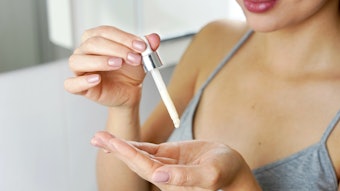In an industry dedicated to beauty, it is doubtful that antiaging products will ever fade away, which is great job security for many skin care formulators. Several approaches are taken to antiaging solutions—from covering up wrinkles or filling them in, to OTC and prescription treatments that reverse the effects of photoaging and sagging; even more invasive methods such as professional laser resurfacing, skin bleaching, microdermabrasion, muscle-paralyzing injections or plastic surgery.
The personal care industry has taken notice of the more invasive methods available to treat the signs of aging, either as a competing industry or sometimes formulating to work in conjunction as pre-treatments, synergistic lotions/lubricants, or after-the-fact healing formulas. The professional care market is being tapped into as at-home prestige products or mass-market versions of them are reaching the mainstream.
This issue of Cosmetics & Toiletries is a documentary about antiaging and covers several of the key approaches to it. With the straightforward, cover-up approach to wrinkles, Vervier and Courel discuss, “Masking Wrinkles and Enhancing Skin Feel with Silicone Elastomer Powder.” On a deeper, cell-activating level, Rigano and Andolfatto describe an extract of DNA from the gonadic tissue of male sturgeons and its effects on skin moisture, thickness, elasticity and micro-wrinkles.
From a different angle, Lenaers et al. look at a rye extract rich in arabinogalactans, which reportedly has been shown to stimulate the synthesis of proteins and fibers in the skin, essentially counteracting the effects of gravity on skin. And to deliver these novel cosmeceutical agents directly to their sites of action, Tamarkin et al. present foam as a delivery vehicle for antiaging actives.
The natural process of aging will continue, and as long as consumers prefer a younger-looking appearance, formulators are called upon to provide news ways to maintain or turn back the hands of time and their effects on skin.










